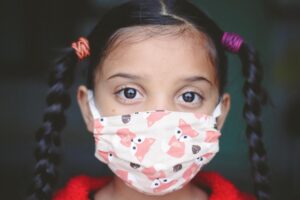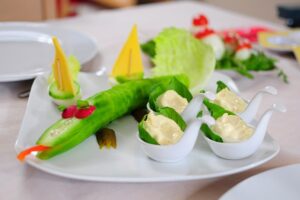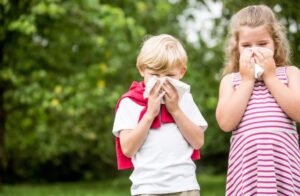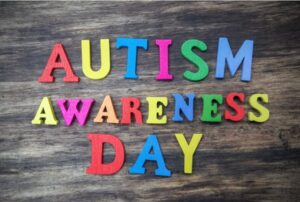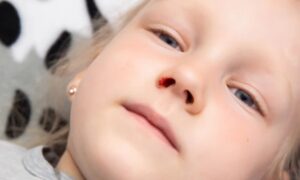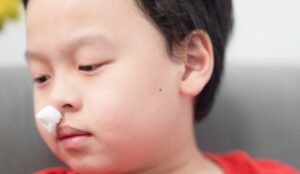Today, we're going to discuss a topic that might confuse some parents—pityriasis alba. Although it sounds like a complicated skin condition, it’s actually quite common, especially in children. You may have noticed light, whitish patches appearing on your child’s face, arms, or around the neck. These might be symptoms of pityriasis alba.
While pityriasis alba is generally harmless, its appearance can make parents anxious. So, aside from applying topical treatments or visiting a dermatologist, can nutrition play a role in managing this condition? Today, we’ll talk about the relationship between nutrition and pityriasis alba and how we can support our kids through diet.
What is Pityriasis Alba?
First, let’s quickly go over what pityriasis alba is. Pityriasis alba is a skin condition characterized by irregular, pale white patches that typically appear without inflammation. It is most common in children and adolescents, particularly those with dry skin.
Though it might look concerning, pityriasis alba is not contagious, and it usually doesn’t cause pain or itching. It typically appears on the face, neck, arms, or chest. Doctors believe that its development may be related to dry skin, allergic reactions, excessive sun exposure, or certain environmental factors.
The Link Between Nutrition and Skin Health
Skin health is closely tied to the nutrients we consume. While pityriasis alba is not directly caused by nutritional deficiencies, proper nutrition can help improve the skin’s condition. For children with dry skin, making sure they get key nutrients is essential.
Let’s look at which nutrients are most beneficial for skin health:
- Vitamin A: This is one of the most important vitamins for skin health. It helps maintain the integrity of the skin and promotes the turnover of skin cells. Children who are deficient in vitamin A are more likely to experience dry, flaky skin, which can worsen the symptoms of pityriasis alba. Foods rich in vitamin A include carrots, pumpkin, bell peppers, and dark leafy greens.
- Vitamin E: Vitamin E is a powerful antioxidant that protects the skin from damage caused by UV rays and environmental factors. It also has a moisturizing effect, which is helpful for managing the dryness associated with pityriasis alba. Foods rich in vitamin E include nuts (like almonds and walnuts), seeds (like sunflower and pumpkin seeds), and plant oils (like olive oil).
- Omega-3 Fatty Acids: Omega-3s are healthy fats with anti-inflammatory properties that can reduce skin irritation. If your child gets enough omega-3s, it may help reduce dryness and flaking. Omega-3-rich foods include fatty fish (like salmon and tuna), flaxseeds, chia seeds, and walnuts.
- Zinc: Zinc is another crucial mineral for skin health. It supports skin repair and helps with immune function. A deficiency in zinc can lead to inflammation, dryness, and even acne. Foods high in zinc include beef, lamb, seafood, legumes, and whole grains.
- Water: Staying hydrated is essential for skin moisture. During the winter months or in dry climates, ensuring your child drinks plenty of water is especially important. Water not only hydrates the skin but also helps remove toxins from the body, keeping the skin clear and healthy.
How to Help Your Child with Diet?
Now that we know which nutrients are beneficial for skin health, how can we incorporate them into our children's diets? Here are a few ideas for healthy, tasty meals:
- Carrot and Pumpkin Soup: Combine carrots and pumpkin for a dish that's rich in vitamin A and fiber, making it both delicious and nutritious.
- Salmon Salad: Prepare a salad with fresh vegetables like lettuce, cucumber, and tomatoes, topped with salmon. This meal provides omega-3 fatty acids and vitamin E, both great for skin health.
- Nutty Snacks: Offer mixed nuts as a snack. They're a great source of vitamin E and healthy fats.
- Oatmeal: Oats are not only a whole grain but also contain zinc and antioxidants. You can serve them as a warm porridge with fruits and nuts for extra nutrition.
- Fruit and Veggie Salad: Prepare a fresh salad with antioxidant-rich fruits and vegetables like blueberries, strawberries, spinach, and kale. These help protect the skin from environmental damage.
Things to Avoid: Potential Skin Irritants
In addition to adding skin-friendly nutrients to your child's diet, it’s also important to avoid certain foods that could potentially irritate their skin. These include:
- High-sugar foods: Excess sugar can worsen inflammation and lead to skin issues like acne or eczema.
- Spicy foods: Spicy foods may trigger irritation, especially in children with sensitive skin.
- Greasy foods: Oily foods can lead to excessive oil production in the skin, which may exacerbate dryness or lead to breakouts.
In Summary
While pityriasis alba is generally harmless and self-limiting, as parents, we can support our children by ensuring they’re getting the right nutrients for healthy skin. By incorporating foods rich in vitamin A, vitamin E, omega-3s, zinc, and ensuring proper hydration, you can help improve your child’s skin condition and promote overall skin health.
Remember, pityriasis alba doesn’t affect your child’s growth or development. As long as you maintain a balanced diet and good skincare practices, most cases will improve over time. However, if the condition doesn’t improve or worsens, it’s always a good idea to consult a dermatologist for further advice.
We hope this article has been helpful! If you have any questions or thoughts, feel free to leave a comment below!
References:
- McDonald, C. (2020). Pityriasis Alba: Diagnosis and Management. Journal of Pediatric Dermatology.
- Maller, C. et al. (2018). Role of Vitamin A in Skin Health. American Journal of Clinical Nutrition.
- Agner, T. et al. (2017). The Influence of Omega-3 Fatty Acids on Skin Disorders. European Journal of Dermatology.
- Wiegand, C. et al. (2016). Zinc in Dermatology: A Review of Zinc Deficiency and Skin Conditions. Dermatology Times.
- Juhasz, M. et al. (2015). Nutritional Factors and Their Role in Skin Health. Nutrition in Clinical Practice.





